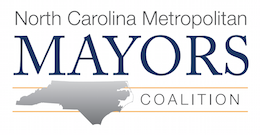Stimulus money goes where the people aren't (NYT)
BY MICHAEL COOPER AND GRIFF PALMER – THE NEW YORK TIMES
Published: Thu, Jul. 09, 2009 04:53AM
Two-thirds of the U.S. population lives in large metropolitan areas, home to the nation's worst traffic jams and some of its oldest roads and bridges. But cities and their surrounding regions are getting far less than two-thirds of federal transportation stimulus money.
According to an analysis by The New York Times of 5,274 transportation projects approved so far — the most complete look yet at how states plan to spend their stimulus money — the 100 largest metropolitan areas are getting less than half the money from the biggest pot of transportation stimulus money. In many cases, they have lost a tug of war with state lawmakers that urban advocates say could hurt the nation's economic engines.
The stimulus law provided $26.6 billion for highways, bridges and other transportation projects but left the decision on how to spend most of it to the states, which have a long history of giving short shrift to major metropolitan areas when it comes to dividing federal transportation money. Now that all 50 states have beat a June 30 deadline by winning approval for projects that will use more than half of that transportation money, worth $16.4 billion, it is clear that the stimulus
“If we're trying to recover the nation's economy, we should be focusing where the economy is, which is in these large areas,” said Robert Puentes, a senior fellow at the Brookings Institution's Metropolitan Policy Program, which advocates more targeted spending. “But states take this peanut-butter approach, taking the dollars and spreading them around very thinly, rather than taking the dollars and concentrating them where the most complex transportation problems are.”
The 100 largest metropolitan areas also contribute three-quarters of the nation's economic activity, and one consequence of that is monumental traffic jams. A study of congestion in urban areas released Wednesday by the Texas Transportation Institute found that traffic jams in 2007 cost urban Americans 2.8 billion gallons of wasted gas and 4.2 billion hours of lost time.
The Times analysis shows that a little more than half of the stimulus money will be spent on “pavement improvement” projects, mostly repaving rutted and potholed roads. Nearly one-tenth of it will be spent to fix or replace bridges. More than a quarter of the money will be spent to widen roads or build new roads or bridges.
But the projects also offered vivid evidence that metropolitan areas are losing the struggle for stimulus money. Seattle found itself shut out when lawmakers in the state of Washington divided the first pot of stimulus money. Missouri has directed nearly half its money to 89 small counties that, together, comprise only a quarter of the state's population. The U.S. Conference of Mayors, which did its own analysis of different data in June, concluded that the nation's metropolitan areas were being “shortchanged.”
Pat McCrory, the mayor of Charlotte, N.C., complained that his city “did pretty terrible” when it came to getting money. Of the $423 million in projects approved so far in North Carolina, only $7.8 million is going to Mecklenburg County, the state's most populous county and the home of Charlotte.
Cleveland was initially promised $200 million of Ohio's stimulus money to help build a five-lane bridge to replace the 50-year-old Innerbelt Bridge, which is so deteriorated that officials banned heavy truck traffic on it last fall. But state officials, worried about meeting federal deadlines, took back $115 million in stimulus money and decided to use it on shovel-ready projects elsewhere.
Transportation experts said the stimulus is drawing attention to a longstanding trend.
“We have a long history of shortchanging cities and metropolitan areas and allocating transportation money to places where few people live,” said Owen D. Gutfreund, an assistant professor of urban planning at the City University of New York who wrote “20th Century Sprawl: Highways and the Reshaping of the American Landscape.”
Gutfreund said that in some states the distribution was driven by statehouse politics, with money spread to the districts of as many lawmakers as possible, or given out as political favors. In others, he said, the money is distributed by formulas that favor rural areas or that give priority to state-owned roads, often found far outside of urban areas.
Mayors had lobbied Congress to send the money directly to cities, but in the end, 70 percent of the money was sent to the states to be divided, and 30 percent was sent to metropolitan planning organizations, which represent the local governments in many metropolitan areas.
Those organizations were not bound by the June 30 deadline for getting their projects approved, so metropolitan areas could eventually see their share of the transportation money go up. Other pots of money in the transportation bill stand to benefit metropolitan areas more, including the $8.4 billion for mass transit and the $1.5 billion that the U.S. Transportation Department can award to projects of national or regional importance.
###


